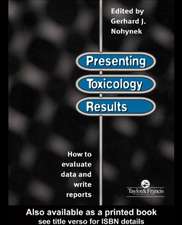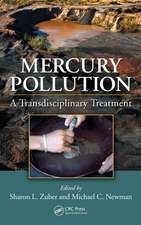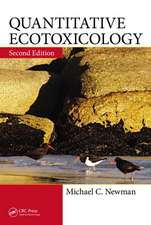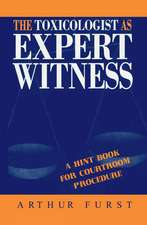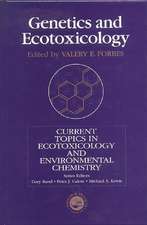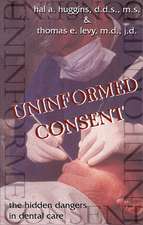Fundamental QSARs for Metal Ions
Autor John D. Walker, Michael C. Newman, Monica Enacheen Limba Engleză Hardback – 13 dec 2012
- Provides a historical perspective and introduction to developing QSARs for metal ions
- Explains the electronic structures and atomic parameters of metals essential to understanding differences in chemical properties that influence cation toxicity, bioconcentration, biosorption, and binding
- Describes the chemical properties of metals that are used to develop QSARs for metal ions
- Illustrates the descriptors needed to develop metal ion-ligand binding QSARs
- Discusses 280 QSARs for metal ions
- Explains the differences between QSARs for metal ions and Biotic Ligand Models
- Lists the regulatory limits of metals and provides examples of regulatory applications
- Illustrates how to construct QSARs for metal ions
Dr. John D. Walker is the winner of the 2013 SETAC Government Service Award.
| Toate formatele și edițiile | Preț | Express |
|---|---|---|
| Paperback (1) | 489.26 lei 6-8 săpt. | |
| CRC Press – 23 sep 2019 | 489.26 lei 6-8 săpt. | |
| Hardback (1) | 1275.71 lei 6-8 săpt. | |
| CRC Press – 13 dec 2012 | 1275.71 lei 6-8 săpt. |
Preț: 1275.71 lei
Preț vechi: 1555.74 lei
-18% Nou
Puncte Express: 1914
Preț estimativ în valută:
244.14€ • 253.94$ • 201.55£
244.14€ • 253.94$ • 201.55£
Carte tipărită la comandă
Livrare economică 12-26 aprilie
Preluare comenzi: 021 569.72.76
Specificații
ISBN-13: 9781420084337
ISBN-10: 142008433X
Pagini: 302
Ilustrații: 74 b/w images, 61 tables and Approx 157 equations
Dimensiuni: 156 x 234 x 23 mm
Greutate: 0.54 kg
Ediția:New.
Editura: CRC Press
Colecția CRC Press
ISBN-10: 142008433X
Pagini: 302
Ilustrații: 74 b/w images, 61 tables and Approx 157 equations
Dimensiuni: 156 x 234 x 23 mm
Greutate: 0.54 kg
Ediția:New.
Editura: CRC Press
Colecția CRC Press
Public țintă
Academic and Professional Practice & DevelopmentCuprins
Introduction. Electronic Structure of Metals and Atomic Parameters. Properties of Metals and Metal Ions Related to QSAR Studies. Descriptors for Organometallic Complexes. QSARs for Predicting Cation Toxicity, Bioconcentration, Biosorption, and Binding. QSARs versus BLM. Regulatory Limits and Applications. Constructing QSARs for Metal Ions.
Notă biografică
Monica Enache hasthirteen years of professional academic experience in Biology. Since 1999 she has been working at the Faculty of Biotechnology of the University of Agricultural Sciences and Veterinary Medicine of Bucharest, Romania. Prior to joining the faculty she has carried out her PhD degree in Liverpool John Moores University (UK), and received her Bachelor of Science degree from the Faculty of Biology of the University of Bucharest (Romania). She is currently a member of the National Society of Cell Biology in Romania, and has authored or co-authoredthen publications andfourteen abstracts for presentations at national or international scientific meetings.
Descriere
Focusing on the field of metal ion bioactivity in Quantitative Structure Activity Relationships (QSAR), this book concentrates on the basic and essential applications of QSAR methods in metal ions for readers familiar with the field and statistics. It delineates the theoretical basis and provides a concrete introduction to studying the biological activity and toxicity of metal ions as they impact health and the environment. The book describes the applications of QSARs in characterizing the biological activity and toxicity of metal ions and provides parameters for the correlation of structure with inorganic biological activity.


